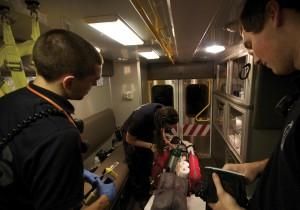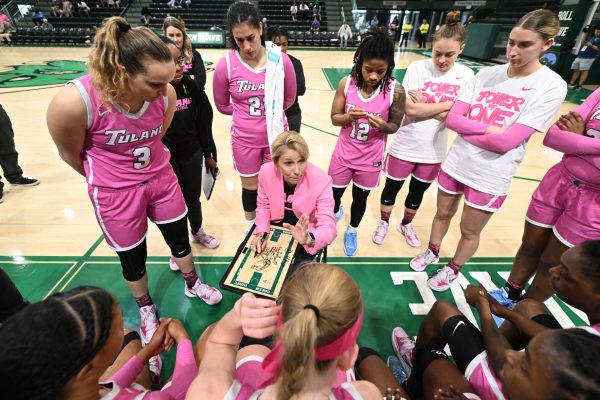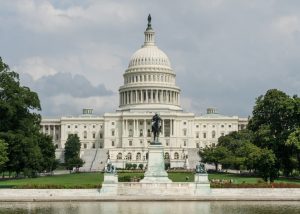No headline provided

April 27, 2012
The Undergraduate Student Government approved Tulane University Medical Services’ reserve budget request for $150,330 to purchase a new ambulance.
TEMS director of operations Cody Foster said that in the process of acquiring funding for the ambulance, members of TEMS contacted the Loyola Student Government Association, asking to discuss the possibility of a contribution from the Loyola SGA. Foster said TEMS received no response from the students and were instead immediately referred to the Loyola SGA director, who contacted TEMS Medical Director James Farrow.
Foster said Farrow has been working with Loyola staff members to discuss Loyola’s financial support of TEMS.
Loyola currently contributes $6,000 per year for the operating budget, and TEMS receives the rest of its funding from the student health center. The annual budget for operations is $38,000. Since all TEMS services are free, students and other users saved an estimated $378,126 in 2011.
TEMS Director Bijan Rizi said Loyola students made up approximately 18 percent of its total calls in 2011-12.
“We figured since they’re using 18 percent of the calls, then contributing around 18 percent for the ambulance would be fair,” Rizi said. “We know that USG is putting pressure on us as to why Loyola isn’t giving us money, but it really is out of our hands, as much as we’d like to do something about it.”
USG Vice President of Finance J.P. Gooderham said USG decided to allot the full $150,330 to TEMS, even though members of both organizations believed that Loyola should have covered a portion of the cost. Gooderham said this decision was partly due to the fact that USG is aware of conversations between President Scott Cowen and Loyola President Kevin Wildes aimed at adjusting funding for a variety of services shared by the universities, including TEMS.
“The debate in the finance committee was we all know Loyola is using a substantial portion of TEMS’ resources, and we feel like they should be pitching in more than they currently are,” Gooderham said. “So do we give [TEMS] some of the money and then say Loyola should pay the rest of it? At this point, there is a lot of stuff happening way above us determining how these divisive issues are going to be resolved. It’s not TEMS’ fault in this situation, so this was really the time for us to just pay for the ambulance.”
Foster said TEMS expressed urgency for the approval of the request because it hopes to have the ambulance up and running by September, the busiest month of the year in terms of TEMS call volume. TEMS is now waiting for the Office of Purchasing to give it final approval before the organization contacts the vendor, who will then prepare the ambulance. This process takes about three months. Once it is ready, TEMS members will drive it from Texas and prepare it for legal operation in New Orleans.
Foster said TEMS’ initially planned to replace its oldest unit with the new ambulance. After speaking with the university and New Orleans Emergency Medical Services and considering the substantial increase in call volume this year, TEMS decided to keep the oldest ambulance for training sessions and to use as a tertiary unit when the other two ambulances are out on calls.
“A handful of times this year, we have had to activate New Orleans EMS because both of our ambulances were in use when we got a call,” Foster said. “Ultimately, our goal is to go to any student that needs us, and if we can’t go because we’re on a different call, then we’re not doing our job. [The ambulence] is essentially going to allow us to go to every call we get.”





















Leave a Comment